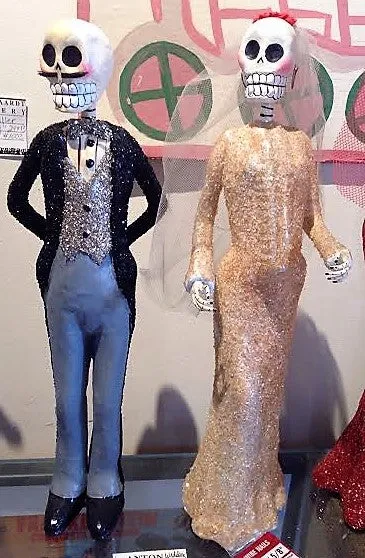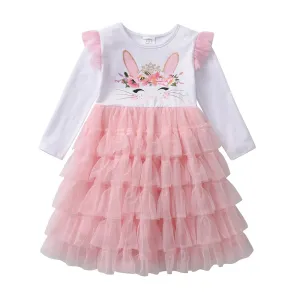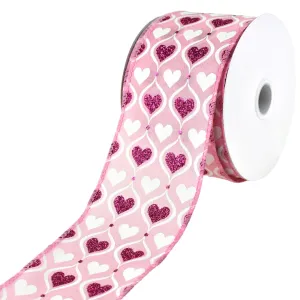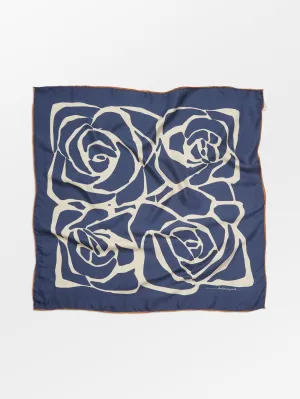This image now popular in ceramic and paper mache,and is actually inspired from a zinc etching by the famous Mexican printmaker, cartoon illustrator and lithographer, José Guadalupe Posada.
While he was alive, Posada received what amounted to just a few cents for each of his drawings. He lived a humble life and upon his death, was buried in a common grave. His artwork is now a beloved symbol of Mexico itself. Posada began to use Mexico’s traditional Day of the Dead celebration as his theme. He would stage scenes with skeletons in working class barrios, in suburban communities and in the houses of the elite class. Riding on bicycles and garbed in the latest finery, Posada’s skeletons became metaphors for the corrupt elitist class, and La Catrina came to life. In his original 1910 etching of La Catrina, Posada describes a person who was ashamed of their Indian origins and dressed imitating the French style while wearing a lot of makeup to make their skin look whiter. This description also ties to the original name garbancera, which became a nickname given to people of indigenous ancestry who imitated European style and denied their own cultural heritage.
La Calavera Catrina translates into "Dapper Skeleton" or "Elegant Skull".
Catrina has come to symbolize not only El Día de los Muertos and the Mexican willingness to laugh at death itself, but also refer to rich people that, “Death brings this neutralizing force; everyone is equal in the end. Sometimes people have to be reminded of that.”
Skeletons from all walks of life are represented to relay the message that no matter who you are in life-rich or poor, famous or unknown-you will end up a skeleton in the end.
5" x 17"












